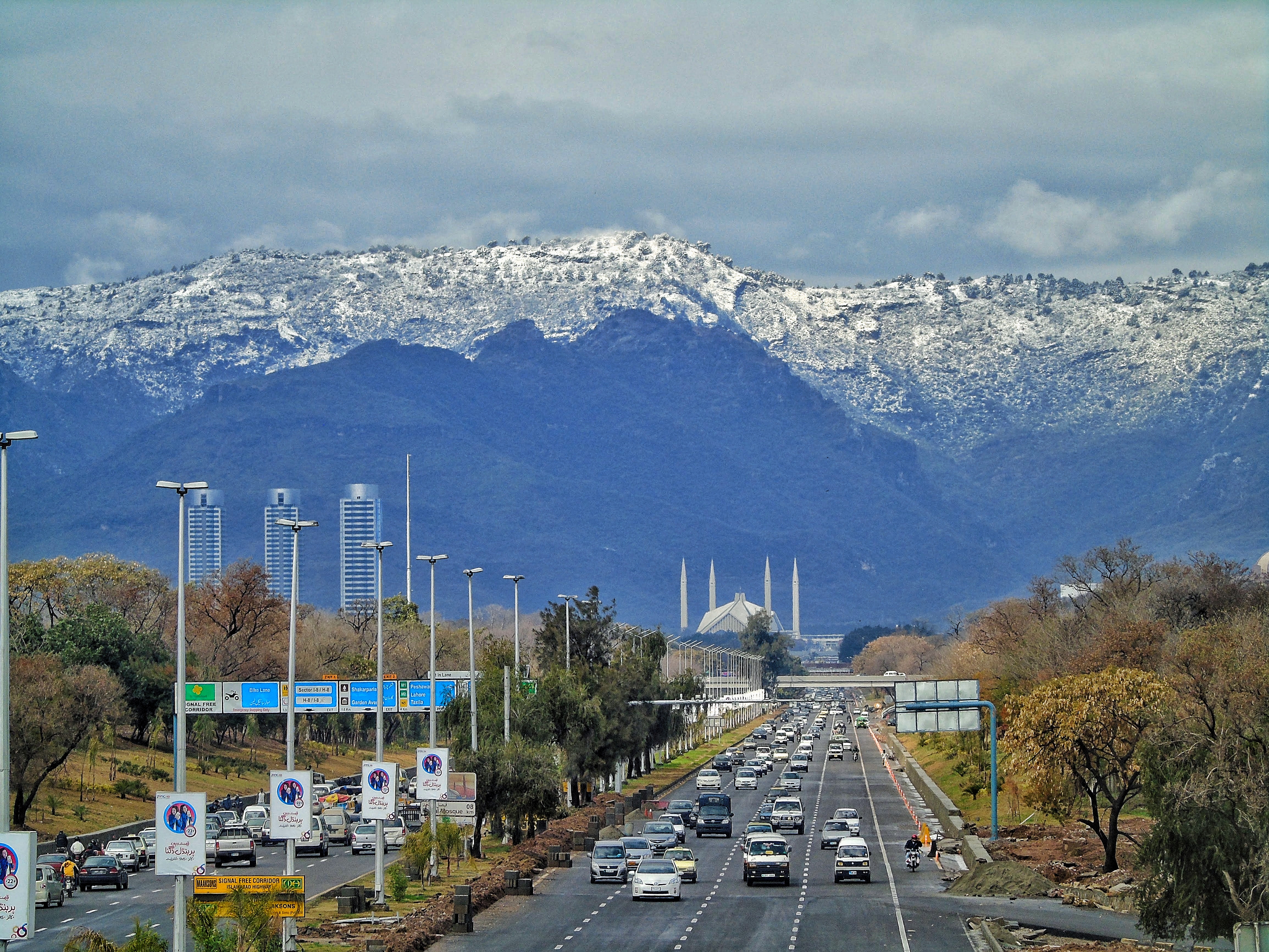|
National Engineering And Scientific Commission
The National Engineering & Scientific Commission (NESCOM) ( ur, ) is a Pakistani missile manufacturer and civilian research organization of Pakistan, under the administrative control of the Strategic Plans Division of Pakistan's National Command Authority and is headquartered in Islamabad, Pakistan. In 2007, it was reported that NESCOM had exported military equipment worth approximately $40 million annually to various countries in the Middle East, South East Asia, and Africa. According to then-Chairman Samar Mubarakmand, NESCOM had developed various communication systems and electronic counter-measures systems for the Pakistan Air Force and Pakistan Navy. History National Engineering & Scientific Commission (NESCOM) was formed in 2000 by amalgamating the National Development Complex, Air Weapons Complex, Maritime Technologies Complex and the Project Management Organization. In the early 2000s, NESCOM rapidly achieved several firsts. Among them, was the development of the Shah ... [...More Info...] [...Related Items...] OR: [Wikipedia] [Google] [Baidu] |
Islamabad
Islamabad (; ur, , ) is the capital city of Pakistan. It is the country's ninth-most populous city, with a population of over 1.2 million people, and is federally administered by the Pakistani government as part of the Islamabad Capital Territory. Built as a planned city in the 1960s, it replaced Rawalpindi as Pakistan's national capital. The city is notable for its high standards of living, safety, cleanliness, and abundant greenery. Greek architect Constantinos Apostolou Doxiadis developed Islamabad's master plan, in which he divided it into eight zones; administrative, diplomatic enclave, residential areas, educational and industrial sectors, commercial areas, as well as rural and green areas administered by the Islamabad Metropolitan Corporation with support from the Capital Development Authority. Islamabad is known for the presence of several parks and forests, including the Margalla Hills National Park and the Shakarparian. It is home to several landmarks, includin ... [...More Info...] [...Related Items...] OR: [Wikipedia] [Google] [Baidu] |
Electronics
The field of electronics is a branch of physics and electrical engineering that deals with the emission, behaviour and effects of electrons using electronic devices. Electronics uses active devices to control electron flow by amplification and rectification, which distinguishes it from classical electrical engineering, which only uses passive effects such as resistance, capacitance and inductance to control electric current flow. Electronics has hugely influenced the development of modern society. The central driving force behind the entire electronics industry is the semiconductor industry sector, which has annual sales of over $481 billion as of 2018. The largest industry sector is e-commerce, which generated over $29 trillion in 2017. History and development Electronics has hugely influenced the development of modern society. The identification of the electron in 1897, along with the subsequent invention of the vacuum tube which could amplify and rectify small ... [...More Info...] [...Related Items...] OR: [Wikipedia] [Google] [Baidu] |
Solid-fueled
Solid fuel refers to various forms of solid material that can be burnt to release energy, providing heat and light through the process of combustion. Solid fuels can be contrasted with liquid fuels and gaseous fuels. Common examples of solid fuels include wood, charcoal, peat, coal, hexamine fuel tablets, dry dung, wood pellets, corn, wheat, rye, and other grains. Solid fuels are extensively used in rocketry as solid propellants. Solid fuels have been used throughout human history to create fire and solid fuel is still in widespread use throughout the world in the present day. Types of solid fuels Wood Wood fuel can refer to several fuels such as firewood, charcoal, ''wood chips'' sheets, pellets, and sawdust. The particular form used depends upon factors such as source, quantity, quality and application. In many areas, wood is the most easily available form of fuel, requiring no tools in the case of picking up dead wood, or few tools. Today, burning of wood is the largest use ... [...More Info...] [...Related Items...] OR: [Wikipedia] [Google] [Baidu] |
Abdali-I
The Abdali-I (Urdu:ابدالى-ا; official codename: Hatf–II Abdali) is a supersonic and tactical surface-to-surface short-range ballistic missile (SRBM) designed and developed by the Space and Upper Atmosphere Research Commission (SUPARCO), and is named after Ahmad Shah Durrani. It is currently in operational service with the Pakistan Armed Forces. The Abdali program was conceived and originally designed by SUPARCO in the 1990s. The program's first derivative was originally designed as the two-stage version of the ''Hatf-I'', essentially a solid-propellant stage was attached to the bottom of a Hatf-I. However, the program was canceled in 1994, likely due to the purchase of the M-11 missiles from the People’s Republic of China. In 1995, SUPARCO successfully persuaded and designed a new module for the Abdali program which was started the same year. Design and specification Its accuracy is sufficient for use against military targets such as bases or airfields. It is carried o ... [...More Info...] [...Related Items...] OR: [Wikipedia] [Google] [Baidu] |
Tactical Ballistic Missile
A tactical ballistic missile (TBM), or battlefield range ballistic missile (BRBM), is a ballistic missile designed for short-range battlefield use. Typically, range (aeronautics), range is less than . Tactical ballistic missiles are usually mobile to ensure survivability and quick deployment, as well as carrying a variety of warheads to target enemy facilities, assembly areas, artillery, and other targets behind the front lines. Warheads can include conventional high explosive, Chemical warfare, chemical, Biological warfare, biological, or nuclear warheads. Typically tactical nuclear weapons are limited in their total yield compared to strategic rockets. Design Tactical ballistic missiles fill the gap between conventional rocket artillery and longer-range short-range ballistic missiles. Tactical missiles can carry heavy payloads deep behind enemy lines in comparison to rockets or gun artillery, while having better mobility and less expense than the more strategic theatre mi ... [...More Info...] [...Related Items...] OR: [Wikipedia] [Google] [Baidu] |
Nasr (missile)
The Hatf IX ("Vengeance IX") or Nasr ( ur, نصر), is a solid fueled tactical ballistic missile system developed by the National Development Complex (NDC) of Pakistan. The ISPR described the system as a "Multi-tube Ballistic Missile" because the launch vehicle carries multiple missiles. Its existence was revealed after a test in 2011 and it appears to have entered service after further testing in 2013. Background According to defence analysts and missile technology experts the system appears to have been developed as a "low-yield battlefield deterrent" targeted at "mechanized forces like armed brigades and divisions." Therefore, it is believed by analysts that the system is deployed to deter and respond to India's " Cold Start" doctrine. The military ISPR maintains that the Hatf IX was developed to "add deterrence value... at shorter ranges... with high accuracy, shoot and scoot attributes" for "quick response." Pakistan confirmed that these tactical nuclear weapons a ... [...More Info...] [...Related Items...] OR: [Wikipedia] [Google] [Baidu] |
Cyberwarfare
Cyberwarfare is the use of cyber attacks against an enemy state, causing comparable harm to actual warfare and/or disrupting vital computer systems. Some intended outcomes could be espionage, sabotage, propaganda, manipulation or economic warfare. There is significant debate among experts regarding the definition of cyberwarfare, and even if such a thing exists. One view is that the term is a misnomer, since no cyber attacks to date could be described as war. An alternative view is that it is a suitable label for cyber attacks which cause physical damage to people and objects in the real world. Many countries including the United States, United Kingdom, Russia, China, Israel, Iran, and North Korea have active cyber capabilities for offensive and defensive operations. As states explore the use of cyber operations and combine capabilities, the likelihood of physical confrontation and violence playing out as a result of, or part of, a cyber operation is increased. However, meeti ... [...More Info...] [...Related Items...] OR: [Wikipedia] [Google] [Baidu] |
Chemical Engineering
Chemical engineering is an engineering field which deals with the study of operation and design of chemical plants as well as methods of improving production. Chemical engineers develop economical commercial processes to convert raw materials into useful products. Chemical engineering uses principles of chemistry, physics, mathematics, biology, and economics to efficiently use, produce, design, transport and transform energy and materials. The work of chemical engineers can range from the utilization of nanotechnology and nanomaterials in the laboratory to large-scale industrial processes that convert chemicals, raw materials, living cells, microorganisms, and energy into useful forms and products. Chemical engineers are involved in many aspects of plant design and operation, including safety and hazard assessments, process design and analysis, modeling, control engineering, chemical reaction engineering, nuclear engineering, biological engineering, construction specification, ... [...More Info...] [...Related Items...] OR: [Wikipedia] [Google] [Baidu] |
Naval Warfare
Naval warfare is combat in and on the sea, the ocean, or any other battlespace involving a major body of water such as a large lake or wide river. Mankind has fought battles on the sea for more than 3,000 years. Even in the interior of large landmasses, transportation before the advent of extensive railroads was largely dependent upon rivers, canals, and other navigable waterways. The latter were crucial in the development of the modern world in Britain, the Low Countries and northern Germany, for they enabled the bulk movement of goods and raw materials without which the Industrial Revolution would not have occurred. Before 1800, war materials were largely moved by river barges or sea vessels and needed a naval defence against enemies. History Mankind has fought battles on the sea for more than 3,000 years. Even in the interior of large landmasses, transportation before the advent of extensive railways was largely dependent upon rivers, canals, and other navigable waterways. ... [...More Info...] [...Related Items...] OR: [Wikipedia] [Google] [Baidu] |
Ground Warfare
Land warfare or ground warfare is the process of military operations eventuating in combat that takes place predominantly on the battlespace land surface of the planet. Land warfare is categorized by the use of large numbers of combat personnel employing a diverse set of combat skills, methods and a wide variety of weapon systems and equipment, conducted in diverse terrains and weather environments. Land warfare, by the virtue of being conducted in defence of urban and rural population areas, dominates the study of war, and is a focus for most national defence policy planning and financial considerations. Land warfare in history has undergone several distinct transitions in conduct from large concentration of largely untrained and irregularly armed populace used in frontal assaults to current employment of combined arms concepts with highly trained regular troops using a wide variety of organisational, weapon and information systems, and employing a variety of strategic, oper ... [...More Info...] [...Related Items...] OR: [Wikipedia] [Google] [Baidu] |
Ammunition
Ammunition (informally ammo) is the material fired, scattered, dropped, or detonated from any weapon or weapon system. Ammunition is both expendable weapons (e.g., bombs, missiles, grenades, land mines) and the component parts of other weapons that create the effect on a target (e.g., bullets and warheads). The purpose of ammunition is to project a force against a selected target to have an effect (usually, but not always, lethal). An example of ammunition is the firearm cartridge, which includes all components required to deliver the weapon effect in a single package. Until the 20th century, black powder was the most common propellant used but has now been replaced in nearly all cases by modern compounds. Ammunition comes in a great range of sizes and types and is often designed to work only in specific weapons systems. However, there are internationally recognized standards for certain ammunition types (e.g., 5.56×45mm NATO) that enable their use across different weapo ... [...More Info...] [...Related Items...] OR: [Wikipedia] [Google] [Baidu] |






